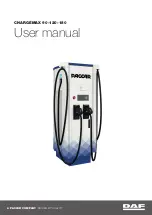
As an added safety feature, your vehicle has been equipped with a tire pressure monitoring
system (TPMS) that illuminates a low tire pressure telltale when one or more of your tires is
significantly under-inflated. Accordingly, when the low tire pressure telltale illuminates, you
should stop and check your tires as soon as possible, and inflate them to the proper
pressure. Driving on a significantly under-inflated tire causes the tire to overheat and can
lead to tire failure. Under-inflation also reduces fuel efficiency and tire tread life, and may
affect the vehicle's handling and stopping ability.
Please note that the TPMS is not a substitute for proper tire maintenance, and it is the
driver's responsibility to maintain correct tire pressure, even if under-inflation has not
reached the level to trigger illumination of the TPMS low tire pressure telltale.
Your vehicle has also been equipped with a TPMS malfunction indicator to indicate when
the system is not operating properly.
The TPMS malfunction indicator is combined with the low tire pressure telltale. When the
system detects a malfunction, the telltale will flash for approximately one minute and then
remain continuously illuminated. This sequence will continue upon subsequent vehicle
start-ups as long as the malfunction exists. When the malfunction indicator is illuminated,
the system may not be able to detect or signal low tire pressure as intended. TPMS
malfunctions may occur for a variety of reasons, including the installation of replacement
or alternate tires or wheels on the vehicle that prevent the TPMS from functioning properly.
Always check the TPMS malfunction telltale after replacing one or more tires or wheels on
your vehicle to ensure that the replacement or alternate tires and wheels allow the TPMS to
continue to function properly.
To avoid false readings, the system samples for a little while before indicating a problem. As
a result it will not instantaneously register a rapid tire deflation or blow out.
▼
System Error Activation
When the warning light flashes, there may
be a system malfunction. Consult an
Authorized Mazda Dealer.
A system error activation may occur in the
following cases:
When there is equipment or a device
near the vehicle using the same radio
frequency as that of the tire pressure
sensors.
When a metallic device such as a
non-genuine navigation system is
equipped near the center of the
dashboard, which may block radio
signals from the tire pressure sensor to
the receiver unit.
When using the following devices in the
vehicle that may cause radio
interference with the receiver unit.
A digital device such as a personal
computer.
A current converter device such as a
DC-AC converter.
When excess snow or ice adheres to the
vehicle, especially around the wheels.
When the tire pressure sensor batteries
are exhausted.
When using a wheel with no tire
pressure sensor installed.
When using tires with steel wire
reinforcement in the sidewalls.
When using tire chains.
When Driving
Tire Pressure Monitoring System
4-253
CX-9_8JK1-EA-20G_Edition2_old
2020-7-20 17:31:45
Summary of Contents for CX-9 2021
Page 4: ...CX 9_8JK1 EA 20G_Edition2_old 2020 7 20 17 31 45 ...
Page 100: ...MEMO 2 90 CX 9_8JK1 EA 20G_Edition2_old 2020 7 20 17 31 45 ...
Page 166: ...MEMO 3 66 CX 9_8JK1 EA 20G_Edition2_old 2020 7 20 17 31 45 ...
Page 169: ...MEMO 4 3 CX 9_8JK1 EA 20G_Edition2_old 2020 7 20 17 31 45 ...
Page 642: ...MEMO 7 54 CX 9_8JK1 EA 20G_Edition2_old 2020 7 20 17 31 45 ...
Page 707: ...10 Index 10 1 CX 9_8JK1 EA 20G_Edition2_old 2020 7 20 17 31 45 ...
Page 718: ...10 12 CX 9_8JK1 EA 20G_Edition2_old 2020 7 20 17 31 45 ...
Page 719: ...10 13 CX 9_8JK1 EA 20G_Edition2_old 2020 7 20 17 31 45 ...
Page 720: ...10 14 CX 9_8JK1 EA 20G_Edition2_old 2020 7 20 17 31 45 ...
















































